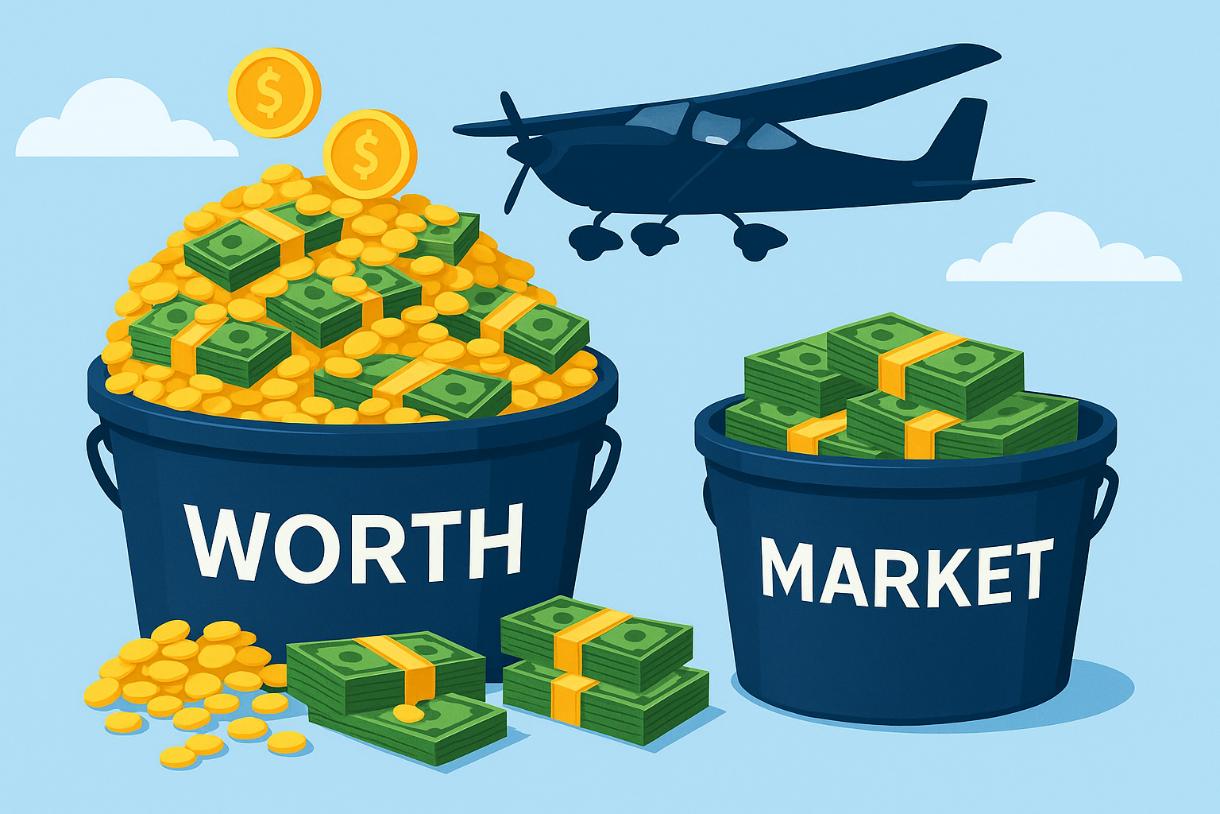As a pilot and founder of an aircraft auction platform, I’ve witnessed firsthand how emotional attachment can cloud judgment when it comes to pricing planes.
Let’s pop the cowling on this misconception.
Traditional aircraft valuation methods often fall short. They rely on simplistic factors like year, make, model, and hours. But each aircraft tells a unique story.
Consider a recent case with a Cessna 185. Purchased at the peak of the post-pandemic market surge, it seemed like a golden investment. The owner poured money into repairs and upgrades, certain of a quick flip.
Months later, it sits unsold.
Why? The market speaks louder than any logbook entry.
The bizav market has been on a rollercoaster since 2020. We saw a surge in demand, followed by a period of stabilization. This volatility exposed the flaws in traditional valuation methods.
Blue book values are about as reliable as clear-air turbulence forecasts.
They don’t account for market sentiment, economic conditions, or the myriad factors that make each aircraft unique. Nor do they capture the depth of information that truly defines an aircraft’s worth.
I’m talking about things like AD compliance, service bulletin status, and the overall care an aircraft has received. These factors can dramatically impact value, yet they’re often overlooked in standard appraisals.
In the world of aviation, sentiment doesn’t generate lift.
Take the case of a meticulously restored Boeing YL-15 Scout. It was a labor of love, costing nearly a million dollars to rebuild and obtain FAA certification. It won accolades at AirVenture and represented a piece of living history.
Yet when it came time to sell, reality hit hard. Museums admired it, but couldn’t afford it. Collectors appreciated its significance, but balked at the price tag.
In the end, it sold for far less than the restoration costs. A tough pill to swallow, but a perfect illustration of the gap between perceived value and market reality.
So how do we bridge this gap?
Think of an auction as your aircraft’s final flight check.
An auction process does what traditional methods can’t. It gathers real-time feedback from multiple potential buyers. It creates a sense of urgency that cuts through indecision.
Most importantly, it lets the market determine the true value.
I’ve seen this play out time and again. A Lear 31A that languished on the traditional market at $1.1 million found its true value at auction. With a reserve set at $700,000, competitive bidding drove the price northward, landing at a point that satisfied both buyer and seller.
This isn’t just about getting the highest price. It’s about finding the real market value, the point where a willing buyer and a realistic seller meet.
The auction process strips away the emotion and the guesswork. It provides hard data on what buyers are actually willing to pay.
But here’s the kicker: this approach requires a mindset shift.
Owners must be willing to confront market realities. Brokers need to set aside ego and focus on facilitating fair deals. It’s not always an easy pill to swallow, but it’s the most direct path to a successful sale.
As we look to the future, I believe this market-driven approach will become the norm. The challenges and opportunities facing bizav in 2024 underscore the need for more agile, responsive valuation methods.
We’re moving towards a more transparent, efficient marketplace. One where emotional attachment and outdated valuation methods no longer ground perfectly good aircraft for months or years.
So, the next time you’re considering buying or selling an aircraft, remember: its true value isn’t in the logbooks or the blue books. It’s in the minds and wallets of potential buyers.
An auction isn’t just a sale. It’s a reality check, a market survey, and a fair deal all rolled into one.
In the end, isn’t that what we’re all after? A fair deal, based on real market data, that keeps our aviation dreams aloft?
Let’s make it happen. The sky’s waiting.


We see the same issue in the boat market working at a marina the father/husband passes and the family memory’s prevent a sale to someone that would get some more great memory’s but those memory’s get set into a unrealistic price. And they sit and rot since the wife/ or family won’t pay the yards price for required maintenance and stop paying the yard fee. And off to the crusher they go after a few years. Sad but true .